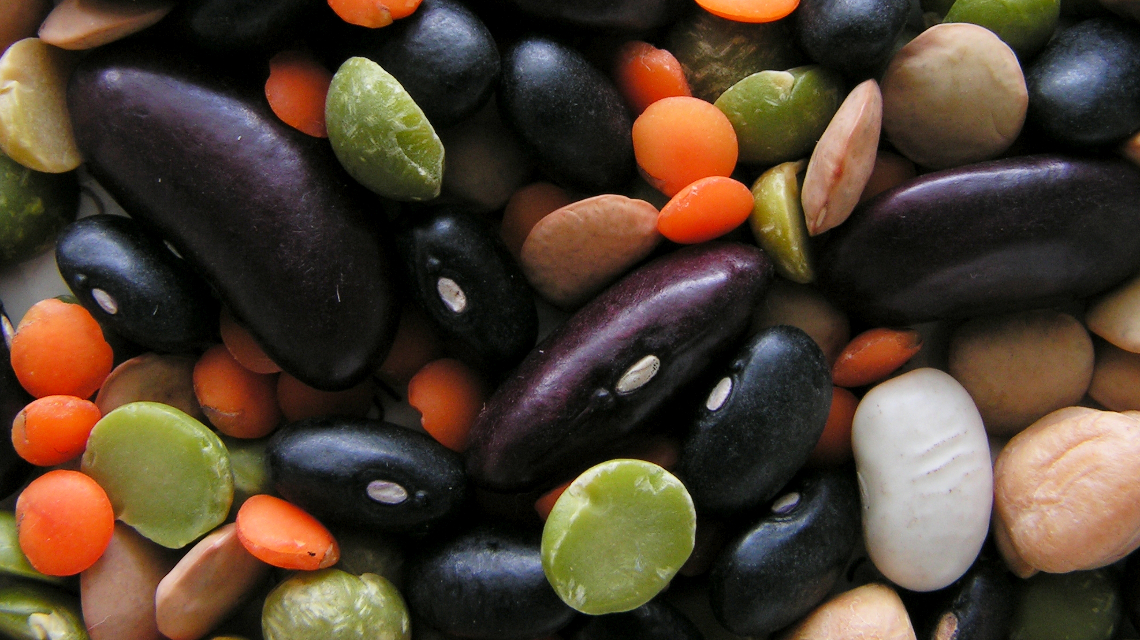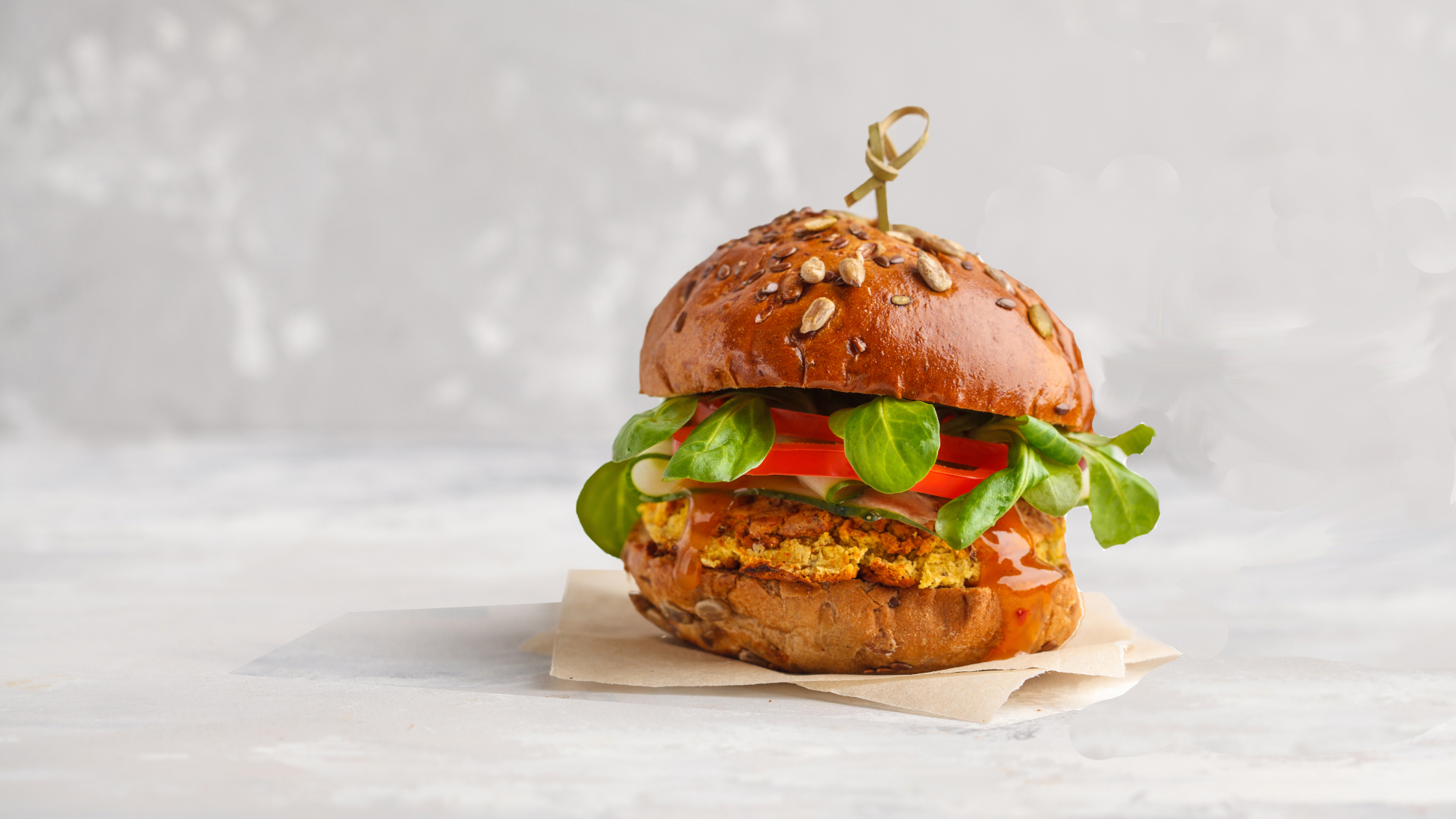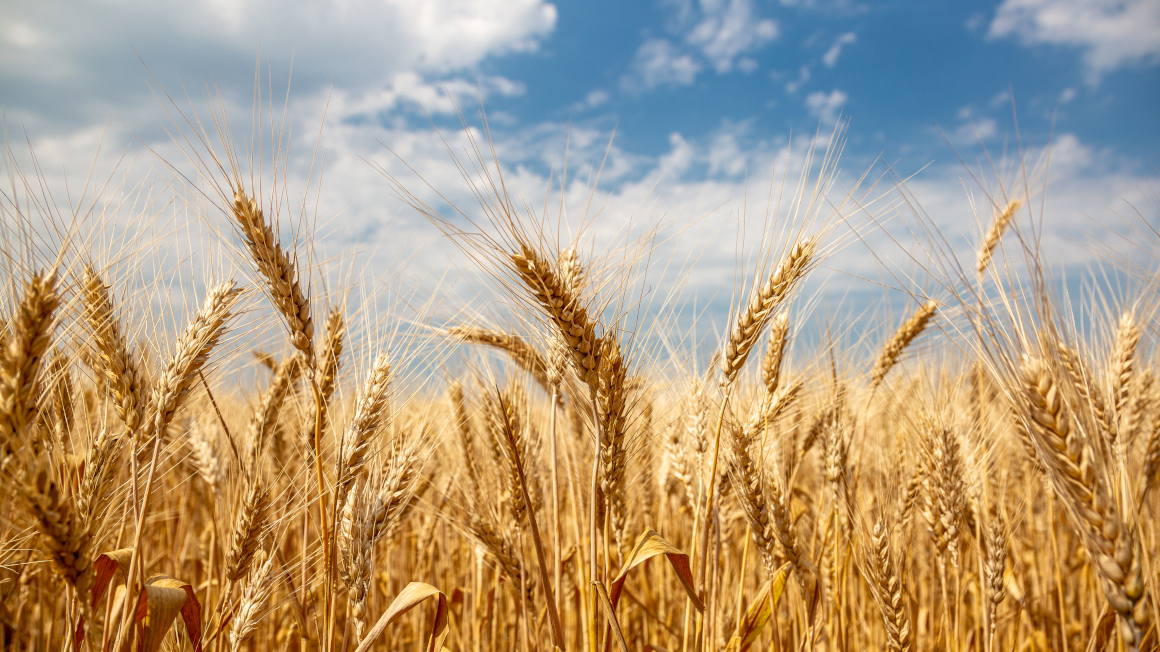Why meat substitute?
Meat substitutes are foods that imitate the taste and texture of animal meat or have a similar protein composition to meat. A number of criteria are decisive for acceptance by consumers, including sustainability, nutritional values and, not least, similarity in taste and texture to real meat, but also price.
The reasons why people turn to meat substitutes vary widely. Essentially, there are three groups, between which there are clear overlaps: religiously motivated people, ethically/ecologically motivated people and health-motivated people. All the major religions include prohibitions or restrictions on diet in their rules. In Islam and Judaism, for example, pork is considered impure, in Hinduism cattle may not be slaughtered, and many Christians abstain from meat during fasting.
More and more flexitarians
Many vegetarians have made their dietary decision for ethical reasons, because they reject husbandry, transport and slaughter conditions or the "use" of living beings in general. This group is growing in people who see (mass) animal farming as the cause of numerous ecological problems and one of the main drivers of the climate crisis: In 2035, meat substitutes could avoid the emission of 1.2 billion tons of CO2 equivalents and the consumption of 54 billion liters of water in livestock farming, the Boston Consulting Group (BCG) has calculated. Last but not least, meat production is associated with distributional inequities and land use conflicts from a global perspective.
The rapidly growing number of people who eat a reduced-meat (flexitarian), vegetarian or vegan diet for these reasons is probably the biggest contributor to the growth of the market for meat substitutes: Of the 15- to 29-year-olds in Germany surveyed for the Böll Foundation's "Fleischatlas," (Meat Atlas) 38% already counted themselves in one of these three groups. Another 44% would like to reduce their meat consumption in the future. According to the German government's latest nutrition report, 64% of 14- to 29-year-olds in this country have already bought meat alternatives. The pandemic-related boom in cooking at home has further fueled this trend.
In addition, health-conscious people are increasingly turning to meat substitutes, as processed "red" meat in particular has gained a bad reputation: a diet rich in meat has been shown to correlate with an increased risk of a number of diseases of affluence, including diabetes, cardiovascular disease and colorectal cancer (see this meta-study, for example). However, whether meat-free alternatives are actually healthier also depends on their other ingredients and whether they provide all the nutrients you need.
Regardless of the motivation for giving up meat, many people have a desire for alternatives that, like meat, are suitable for the preparation of certain dishes or provide equivalent nutrients, especially important proteins, with a view to a balanced diet.
Conserve resources
In addition to potential health benefits, plant-based meat substitutes offer another advantage: They help conserve resources. They require less acreage and energy per calorie than animal products. Raising livestock requires, among other things, growing feed and grazing land. In contrast, algae and fungi even enable production in urban areas and where soils are not very fertile. This defuses land-use conflicts and opens up additional land for food production for a growing world population. The same applies to insect-based protein and cell cultured meat. These two meat alternatives are not discussed in this dossier.
Page 2 of 6
From niche to trend
Each person on earth consumed an average of around 75 kilograms of animal products in 2020. In total, this amounts to around 574 million tons of meat, seafood, dairy products and eggs. It is therefore not surprising that the dietary choices of a small percentage of consumers are enough to turn meat substitutes into a major market segment within a few years. From 13 million metric tons in 2020, demand for alternative proteins is expected to rise to 97 million metric tons by 2035, predicts the consulting firm Boston Consulting Group. By then, 11% of all meat, seafood, dairy products and eggs would be made from alternative proteins - a market value of $290 billion.
In terms of taste, texture and price, the alternative products are likely to have caught up with the animal originals by then, according to the consultancy firm. If legislators were to provide regulatory support for alternative products and the technology were to mature quickly, the share of meat substitutes could even reach 22% by 2035. While the market today is still almost entirely dominated by plant- and fungus-based alternatives, microbial as well as animal proteins from bioreactors are expected to form between 30% and 45% of meat alternatives by 2035, depending on the study. Meat substitutes could replace 60% of traditional meat products by 2040, according to a recent study by management consultants Kearney.
In Germany, sales of vegan sausage in 2020 were around €0.4 billion, according to trade research company Nielsen - hardly worth mentioning compared to €10.8 billion for sausage made from meat. But the breakout from the niche has already begun: While production of meat substitutes was still at 14,700 tons in the 1st quarter of 2019 according to the Meat Atlas, it already amounted to 20,000 tons in the 1st quarter of 2020. Until a few years ago, organic products dominated in this regard; currently, the growth is mainly evident from conventionally grown products. The trend is now so far-reaching that the number of industrial plants for processing plant protein is proving to be a limiting factor.
Acceptance of the products is likely to play an important role in growth: 15% of the people in Germany surveyed for the Meat Atlas see plant-based alternative products as a good substitute, and a further 26% would try them. In vitro meat or insects, on the other hand, are only convincing to 6% and 5% of respondents, respectively. But here, too, 27 % and 25 %, respectively, would at least be willing to try them. The survey also revealed that skepticism and rejection of alternative proteins increase the higher the individual meat consumption. Young people and those with a high level of education, on the other hand, were particularly open-minded.
Page 3 of 6
Meat substitutes from plants, algae and mushrooms at a glance
Protein-rich plant products made from soy and wheat have the longest tradition as a meat alternative. The focus here is on regional protein crops.
Soy
Soy is criticized because soy cultivation in North and South America is associated with large-scale rainforest clearing and ecologically problematic monocultures. In fact, however, most soy for the food industry in Germany comes from European cultivation. Because soy has ingredients that have hormone-like effects, children and especially infants should consume only small amounts. Nevertheless, the high protein content of around 37% makes the soybean attractive as a meat substitute, especially since it contains all essential amino acids.
Tofu made from soy is the classic meat substitute and has a long tradition, especially in Asia. For its production, the soy protein is precipitated with the help of a coagulant. The thickened soy liquid is then pressed out until the desired consistency is achieved. Tofu is largely neutral in taste, but bears no resemblance to meat in texture or consistency. It is often used like ground meat.
Tempeh is made by soaking and cooking whole soybeans. Precious molds ferment the soy mass and coat the soybeans. This gives tempeh a firm, sliceable structure and a mushroomy flavor.
Soy granules are also called textured soy or soy meat. First, the beans are ground and the oil is pressed out. The resulting mass is extruded, during which the soy pieces inflate and the porous texture of dry soy meat is formed. For preparation, the pieces are allowed to swell, roughly tripling their volume, and then drained. After that, they can be prepared like meat.
Yuba is a Japanese specialty. For its production, soy milk is heated, the resulting skin is peeled off, dried and then folded or rolled. To eat, yuba is moistened and then tastes creamy and nutty; or the leaves are used to wrap other foods in and are then fried or steamed. Yuba sticks are also eaten deep-fried.

Wheat
Wheat is becoming increasingly popular as an alternative source of protein: the grain is grown in Germany, unlike soy is harmless as far as hormonal effects are concerned, and results in products whose texture is quite close to that of meat.
For almost 60 years, the most important wheat-based meat alternative has been seitan, which is made from wheat protein (gluten). For this, a dough is first created from flour and water, from which the starch is then kneaded out. The elastic result is then cooked or steam-cooked and can be used in a variety of ways because of its meat-like consistency. Seitan contains only small amounts of the essential amino acid lysine.
Lupine
The sweet lupin has a long tradition as a food, but has a bitter taste. The start-up Prolupin GmbH, a spin-off of the Fraunhofer Institute for Process Engineering and Packaging IVV in Freising, Germany, has developed processing techniques that can be used to produce lupine protein with a neutral sensory profile. For this purpose, the lupine seeds are hulled and pressed into flakes. These are soaked and deoiled using supercritical CO2 to wash out fats and undesirable flavors. What remains is the largely tasteless protein. This innovation won the German Future Prize in 2014.
Prolupin offers alternatives to dairy products through its own brand portfolio. In the future, Prolupin would like to offer this pure lupin protein to other food manufacturers. However, meat substitutes such as sausages and schnitzel made from lupin protein are already available on the market, for example from the German company Purvegan.
Since the lupine is a native plant and also binds nitrogen to its roots via nodule bacteria, thus naturally fertilizing the soil, it has an excellent eco-balance. In addition, at 36% to 48%, it is similar in protein content to the soybean, with significantly fewer carbohydrates and fats.
Pea
Peas (as well as beans and chickpeas) are rich in protein and valuable for a balanced diet. More recently, pea protein in particular has been increasingly used as a meat substitute, especially for sausage and schnitzel. The pioneer is the U.S. company Beyond Meat. In Germany, the start-up Amidori is also making a name for itself, using a process developed jointly with the Fraunhofer IVV to produce pea protein. Basically, the peas are detached from the pod and ground, then starch and fiber are removed. Finally, a special cooking process gives the protein its quite meat-like fibrous structure. Similar to lupines, peas have the advantage of growing well in Germany and fertilizing the soil naturally.
Further plants
Sunflowers are known for their oil, but the protein, which contains all the essential amino acids, is also increasingly being discovered as a raw material. The press cake of the seeds is marketed as mince and, ground even finer, is used in protein shakes and bars. Turnip, celeriac and eggplant are not prepared as protein, but directly in thick slices like cutlets. What goes back to times of hardship is now coming back into fashion with a vegetarian motivation. The same applies to tsa tsai, the storage roots of an Asian type of cabbage. Pickled in lactic acid, they attain a meat-like, firm-to-the-bite consistency. Jackfruit from southern India can also be used as a meat substitute due to its chicken-like consistency. However, it has only a very low energy and protein content and tastes slightly sour.
Algae
Macroalgae are established as a food and are, for example, frequently used in the preparation of sushi or salads. U.S. researchers have now cultivated a red alga of the genus Palmaria, which tastes like meat and is suitable as a ham substitute. The University of Göttingen is also working on algae as a meat substitute, here on the microalgae spirulina. In addition, microalgae such as spirulina and chlorella have so far been used mainly in dietary supplements. Since algae are rich in nutrients and their cultivation does not involve land-use conflicts, they are considered a promising component in the food mix for a growing world population.
Mushrooms
Mushrooms with a large fruiting body have always been roasted and prepared similar to meat, especially since their firm consistency already shows a certain similarity. The firm, fleshy mushrooms include the Brätling, the Krause Glucke, the Leberreischling, the Parasol, the Riesenbovist, the Schwefelporing, the Shiitake and the Steinpilz.
Page 4 of 6
Innovative economic players
Germany
In Germany, there are currently about 60 companies for vegan and vegetarian products, but not all of them also produce meat substitutes. This chapter lists some of these companies as examples.
Many suppliers have organized themselves in the Association for Alternative Protein Sources (BalPro). In addition to specialized manufacturers, private labels and start-ups, producers of conventional meat products have also recognized the trend and have a large market share.
The manufacturer Rügenwalder Mühle, for example, made more sales with vegan and vegetarian meat alternatives than with classic cold cuts or Teewurst for the first time in July 2020. They are now experiencing raw material bottlenecks, for example with pea and soy protein. Yet the company only entered the production of veggie "meat" and "sausage" in 2014. Iglo and Wiesenhof have also recognized the signs of the times and expanded their range to include plant-based meat substitutes. In addition to its own products, Wiesenhof sells the US veggie burger from Beyond Meat in Germany.
The start-ups Purvegan with lupine protein, Amidori with pea protein and Viva Maris with a sausage substitute made from algae stand out for their innovative achievements. Other often young German companies offering and developing plant-based meat substitutes are Berief, Like Meat, MushLabs, Planty of Meat, Naba, Sunflower Familiy, Vegini and Zeevi.
On the research side, the Fraunhofer Institute for Process Engineering and Packaging (IVV), the German Institute of Food Technologies and the University of Hohenheim, as well as the Weihenstephan University of Applied Sciences and the Weihenstephan Campus of the Technical University of Munich, are particularly worthy of mention in the development of alternative plant-based proteins and the corresponding manufacturing processes.

International
Two well-known names outside Germany are certainly the veggie burger patty manufacturer Beyond Meat (USA) and the inventor of Quorn, Marlow Foods (UK). Other large as well as innovative players include Impossible Foods (USA), Planted (CH), ProLaterre (NL), Soyana (CH), Tivali (NL), VeggieMeat (AT) and Vivera (NL). The major food companies play up their own brands, including Nestlé's "Garden Gourmet" and Unilever's "The Vegetarian Butcher".
More and more international startups are also developing alternative proteins. The Proveg Incubator alone, sponsored by the international umbrella organization of numerous vegetarian associations, has supported more than 40 food startups and a similar number of innovative products that do not contain animal ingredients since November 2018.
Page 5 of 6
How can bioeconomy research support development?
To gain acceptance and further market relevance, substitute products must be comparable or better in quality to the meat original in terms of taste, texture and nutritional value, have a favorable eco-balance and still not cost much more. This cannot be achieved without technological innovations. Bioeconomy research can contribute to advancing plant-based meat substitutes in five fields:
- Most plant breeding research is aimed at optimizing yields for established food and feed products and adapting plants to climate change. But so far, hardly any plant varieties have been developed to serve as protein suppliers for meat substitutes. An important task is therefore to further develop protein-rich crops such as soybean, pea and lupin through breeding.
- In terms of cultivation systems, too, the focus of science has so far been primarily on important cereal species such as corn, wheat and barley. Here, soybeans, peas, lupins and the like must be given greater attention, while at the same time improving the ecological sustainability of the cultivation systems.
- For the new protein sources to be profitable, extraction, i.e. the isolation of the proteins, must also be further improved to achieve maximum yields with high purity and to separate out undesirable components - such as the bitter flavors in lupin. This also includes eliminating allergens.
- Proteins alone do not make a food, and certainly not a tasty one. What is needed, therefore, are additional formulations that meet people's taste expectations and, if necessary, ensure a comprehensive supply of nutrients through additives for all those who follow a meat-free diet. At the same time, like all foods, the products must be storable and transportable.
- Often the biggest hurdle to reaching people who want to replace meat as 1:1 as possible lies in the texture of the plant-based products. Further development work is needed here to meet the high demands and also to be able to implement them on an industrial scale.
Page 6 of 6
Examples from publicly funded research projects
The German Federal Ministry of Education and Research (BMBF) is currently supporting the development of alternative proteins for food production with the NewFoodSystems innovation space. Its basic idea is to bring together players from food and nutrition research and the food industry in order to initiate bioeconomic innovations and to transfer research results even more efficiently into practice.
The innovation space already has more than 40 members from science, industry and society. NewFoodSystems is coordinated by the Max Rubner Institute (MRI) in close cooperation with the Fraunhofer Institute for Process Engineering and Packaging (IVV). One of the three focal points of the innovation space is the development of sustainable protein ingredients. First of all, a comprehensive protein database is to be created in it, which will make it possible to select the optimum protein combinations for specific uses on the basis of characteristic values, in order to be able to use proteins in a more targeted manner for the production of innovative food and animal feed products.
The BMBF-funded TRADINNOVATION project is investigating the extent to which alternative proteins can be successful on the market and which factors influence this. The focus is on plant proteins, insect proteins and cell cultured meat for the provision of meat analogs. Based on the analysis of these three technological innovation systems and their economic, ecological and social consequences, their interactions with each other will be considered and their functionality and problem-solving potential comparatively evaluated.
The BMBF-funded ProteinBioTech project is less concerned with the natural science side of the bioeconomy, but looks at social aspects that influence the choice of protein sources. The aim is to develop a sustainable and health-promoting nutrition culture.
The establishment of sweet lupin as a protein source is largely due to another BMBF-funded project: PlantsProFood in Mecklenburg-Western Pomerania. The research consortium of ten industrial partners - including ProLupin GmbH - and three research institutions has been investigating the use of lupin ingredients in confectionery and delicatessen products as well as sausages since 2010 as part of the BMBF's "Unternehmen Region" funding initiative. The first product at that time was an ice cream with lupin protein, followed by a "liver sausage" in which lupin protein replaced animal fat.
Individual consortia in the BMBF's Agricultural Systems of the Future funding program are also helpful in establishing alternative proteins. The "food4future" project, for example, focuses on technologies for the production of macroalgae, jellyfish and crickets. "CUBES Circle" is also pursuing the vision of intelligent networking of various agricultural production systems for plants, insects and fish in closed energy and material cycles.
Although the German Federal Ministry of Food and Agriculture (BMEL) does not currently fund projects explicitly dedicated to plant-based meat substitutes, it does support this development by funding research as part of its protein crop strategy:
The "LupiBreed" project pursued the goal of improving yield performance and stability in sweet lupins. The focus was also on optimizing the composition of the ingredients. "LUPI-ZAV" was concerned with making useful breeding traits that have been lost in modern varieties low-in-bitter substances available again for breeding lines by genetic engineering. The joint project "ProHand" focuses on processes that provide the food trade with new precursors for processing in food products. The project is working on the raw materials soy, spelt, oats, rice, almond and coconut, wheat grass, spelt grass, spinach and pea, as well as algae and duckweed. The aim of the project "Innovative and holistic value-added concepts for food and feed from native grain legumes from cultivation to use" (LeguAN) was to produce food and ingredients based on native legumes efficiently and in line with market requirements. For example, flavonoid-rich grain legumes could be obtained without negatively affecting their protein content and composition.
The Max Rubner-Institute is pursuing a number of other related projects. These focus, for example, on the allergenicity of pea proteins, but also on better understanding and optimizing the nutritional physiology of alternative protein sources
The German Federal Ministry for Economic Affairs and Energy (BMWi) is also funding research projects on the subject of plant-based meat substitutes. Since the texture of the alternative protein products is quite essential for their acceptance in the market, one project is devoted to "Texturing mechanisms in the wet extrusion of soy and pea protein". The aim is to make the products more meat-like by adding lipids and pre-structured protein components.
The aim of the "MeatHybrid" research project was to characterize the effects of plant proteins in hybrid products with the character of scalded and raw sausages as well as in convenience products and to optimize them in terms of acceptance tests, nutritional physiology and technical feasibility.
Under the umbrella of the Fraunhofer-Gesellschaft, six institutes have recently joined forces to form the "TrueProteins" alliance. They are developing new, closed cultivation systems and processes to obtain nutrient-rich proteins from selected plants (potatoes, wheatgrass, alfalfa), insects, fungi (pillar fungi such as seitling or shiitake) and algae.
Hesse stands out among the German states, supporting the development of meat-like products from mushroom proteins with the LOEWE funding program. Occasionally, foundations are also active as funders on this topic, such as the Adalbert Raps Foundation, which promotes the evaluation of alternative protein sources for the production of meat substitutes.
The European Union is also promoting alternative proteins across borders, for example in the project „TRUE – TRansition paths to sUstainable legume-based systems in Europe“. Its task is to identify the best ways to expand the sustainable cultivation and consumption of legumes within the EU.



